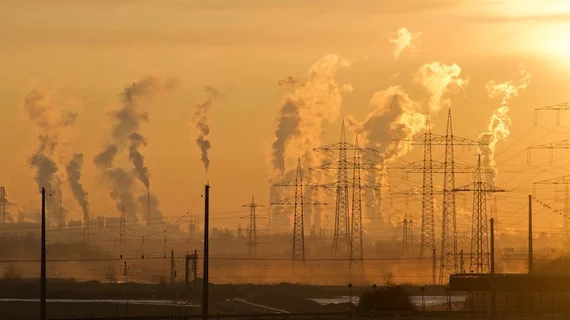Speaker laments radiology’s major contribution to climate change
During his presentation at the annual Radiological Society of North America (RSNA) meeting, Jonathan Gross, MD, of Texas Children’s Hospital attempted to answer the question “what does radiology have to do with climate change?” by detailing how both diagnostic imaging and interventional radiology contribute majorly to greenhouse gas emissions.
While pessimistic about the state of greenhouse emissions globally, Gross added that this “greatest threat to public health of our time” also presents an opportunity to improve public health for not only ourselves but for future generations, assuming climate catastrophe can be thwarted.
“Those of us who are in healthcare, I think we have an especially important role to play here, not only because it is our job—our mission—to protect public health, but also because we know that the healthcare system itself is an important source of greenhouse gas emissions, especially in wealthier countries like the United States where the healthcare sector is responsible for 10% of our country's total greenhouse gas emissions,” Gross said.
While hospitals and radiology practices aren’t usually the first thing that comes to mind when people think of carbon emissions and wasting energy, Gross cites studies from all over the globe that paint a damning picture, one where healthcare organizations are woefully inefficient when it comes to their energy consumption.
The biggest culprits, he said, are MR and CT machines, citing research that shows those imaging modalities use substantially more power than ultrasound. One study demonstrated that a single MRI of the abdomen uses enough electricity to “cool a three bedroom home for one day,” Gross said, adding that the body of evidence from research around the world shows diagnostic radiology—from how the machines are made to each imaging scan—uses an immense amount of power, most of which comes from fossil fuels that contribute to the warming climate.
Worse yet, Gross claimed research shows that CT and MRI machines are often left on, as many organizations don’t have protocols in place for when to turn imaging equipment off.
Despite not using nearly as much heavy imaging equipment, interventional radiology practices aren’t innocent. Gross said heavy waste can be linked to interventional radiology organizations, which often leave their temperature and humidity control systems on even when no one is in the building. Further, disposable supplies are commonplace, most of which are made from plastics and require frequent shipments from gasoline powered vehicles.
“Stepping back, it’s very clear that our current practices in diagnostic and interventional radiology were not developed with sustainability in mind; many of them are very wasteful,” said Gross, adding that a huge amount of the greenhouse gasses released from all sectors of radiology happens when patients aren’t even being cared for.
“[That] means we really do have a responsibility to improve our practices,” he added, advising that protocols should be implemented to shut down imaging equipment when not in use. He also placed responsibility on healthcare organizations to reduce unnecessary imaging studies and transition to reusable surgical equipment.
Gross also called on vendors to make more energy efficient equipment. But, he is aware that all of these changes are meaningless if the world doesn’t transition to new forms of energy.
“In our lives outside of work, we need to advocate for more sustainable sourcing of energy,” he concluded.
Gross’s presentation was part of a larger session titled What Does Climate Change Have to do With Radiology? Impetus for Change and a Call to Action held in November on the RSNA show floor in Chicago.

